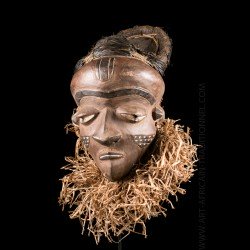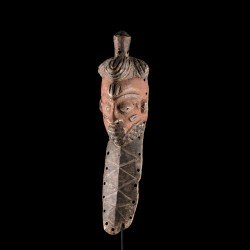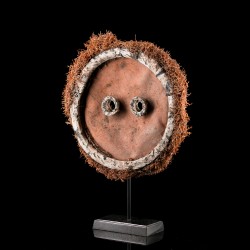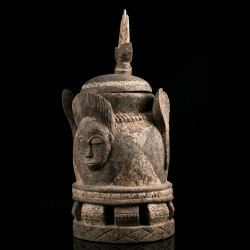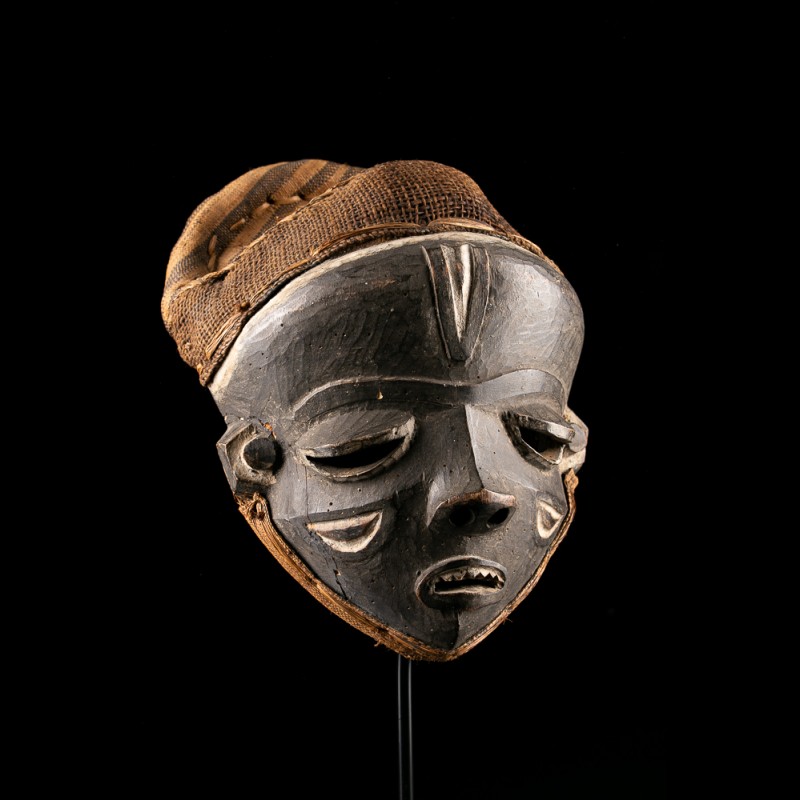






















This African mask with a remarkably dark patina belongs to the Katundu style. This is a mask belonging to the mbuya type, made of wood; the other large type of masks being called minganji composed of raffia fibers. In African Pende art, dozens of characters from the village are represented by different masks.
The mask dancer wears a raffia costume, ankles decorated with bells that allow him to perform movements with a certain rhythm or at a certain cadence thanks to the generated sound.
Stylistically, the most famous masks come from Katundu: the convex and triangular face is shared by a V-shaped eyebrow line embedded in a heart-shaped depression; heavy eyelids droop; the nose is flat and sometimes slightly turned up; finally, the mouth, the corners of which pull downwards, presents cut teeth.
Traditionally, African mbuya masks such as this one danced on the occasion of mukanda, the initiation leading young men from puberty to adulthood. Nowadays, these masks still dance but they are desecrated and come out on the occasion of secular village festivities. The masked dances of the Bapende are a real comedy played out in several acts.
A native repair is slightly visible on the right side of the mask, see photos.
Data sheet
You might also like

This African mask with a remarkably dark patina belongs to the Katundu style. This is a mask belonging to the mbuya type, made of wood; the other large type of masks being called minganji composed of raffia fibers. In African Pende art, dozens of characters from the village are represented by different masks.
The mask dancer wears a raffia costume, ankles decorated with bells that allow him to perform movements with a certain rhythm or at a certain cadence thanks to the generated sound.
Stylistically, the most famous masks come from Katundu: the convex and triangular face is shared by a V-shaped eyebrow line embedded in a heart-shaped depression; heavy eyelids droop; the nose is flat and sometimes slightly turned up; finally, the mouth, the corners of which pull downwards, presents cut teeth.
Traditionally, African mbuya masks such as this one danced on the occasion of mukanda, the initiation leading young men from puberty to adulthood. Nowadays, these masks still dance but they are desecrated and come out on the occasion of secular village festivities. The masked dances of the Bapende are a real comedy played out in several acts.
A native repair is slightly visible on the right side of the mask, see photos.
